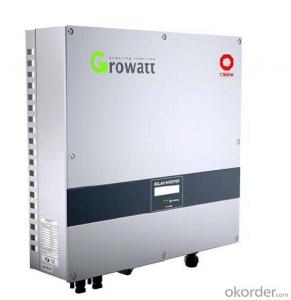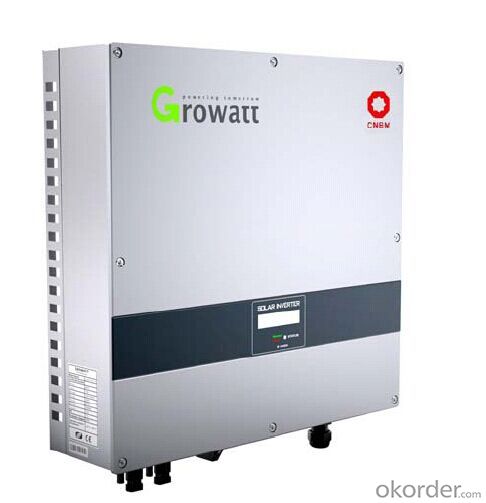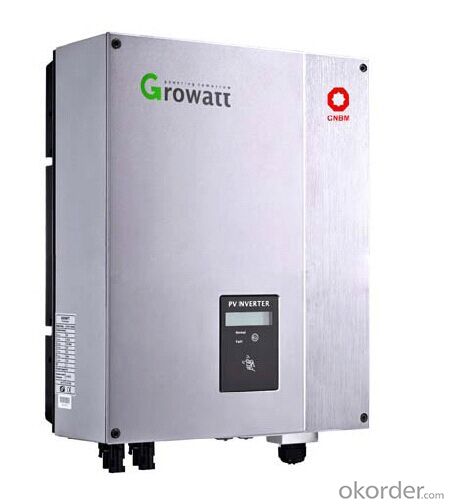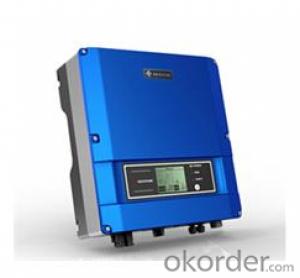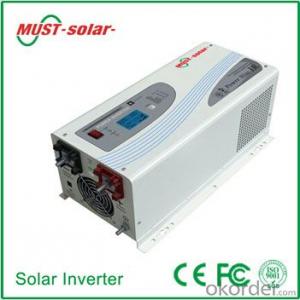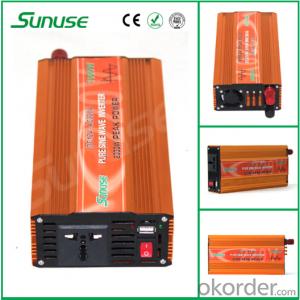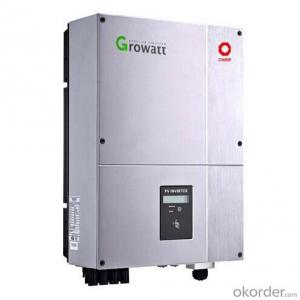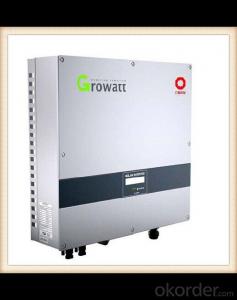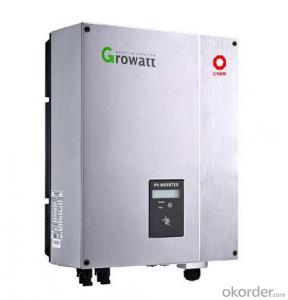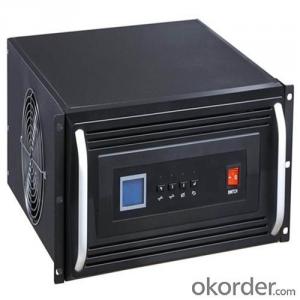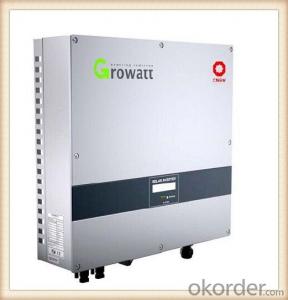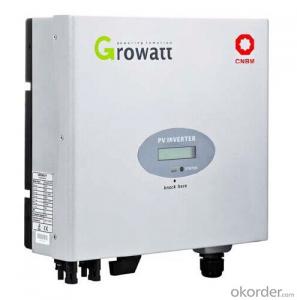6.5 Kw CNBM-1000TL On-Grid Inverter with Energy Storage Hybrid Solar Inverter
- Loading Port:
- China main port
- Payment Terms:
- TT OR LC
- Min Order Qty:
- 1000 watt
- Supply Capability:
- 100000 watt/month
OKorder Service Pledge
OKorder Financial Service
You Might Also Like
Introduction
CNBM-1000TL/1500TL/2000TL/3000TL/4000TL/4400TL/5000TL
Pure sine wave output
Microprocessor controlled to guarantee stable charging system
Multiple operations: Grid tie, Off grid, and grid tie with backup
Built-in MPPT solar charger
LCD display panel for comprehensive information
Multiple communication
Green substitution for generators
User adjustable charging current up to 25A
Maximum efficiency of 97.9% and wide
input voltage range
Wide MPPT voltage
Internal DC switch
Transformerless GT topology
Compact design
MTL – String
Multi-MPPT
Certificate: CE, VDE 0126-1-1,
DK5940, G83/1-1, G59/2, RD1663,
EN50438, VDE-AR-N4105, CEI-021,
IEC-62109, ENEL-Guide, UL1741,
UL1998, IEEE1547, CSA
Warranty: 5/10 years
Features
Maximum efficiency of 96.9% and wide input voltage range
Internal DC switch
MTL-String
Bluetooth/RF technology /wifi
Transformerless GT topology
5 years warranty(10years as optional)
Images
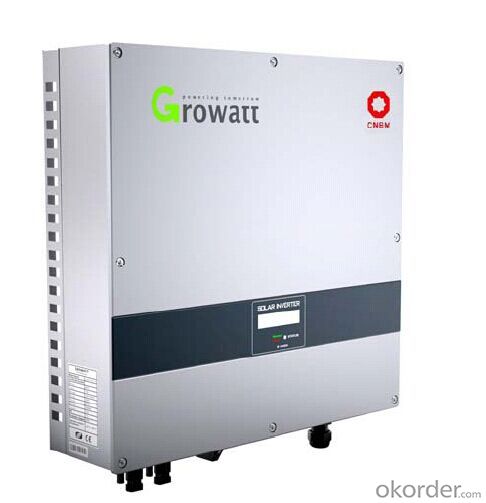
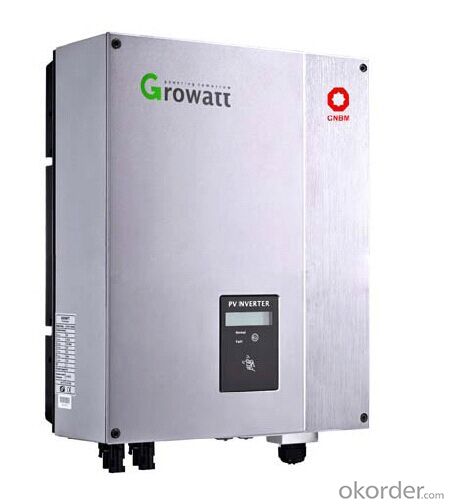
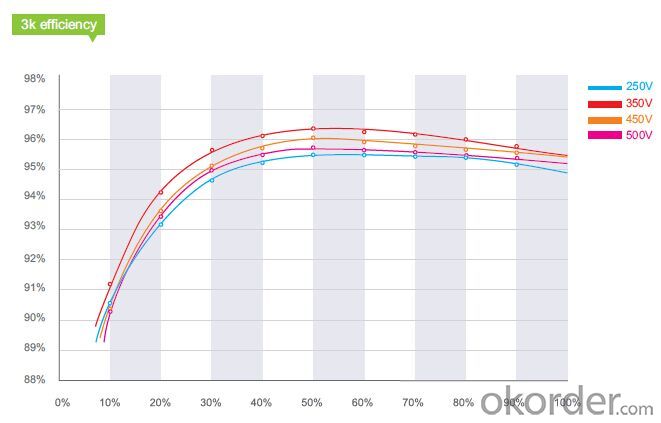
Sepecification

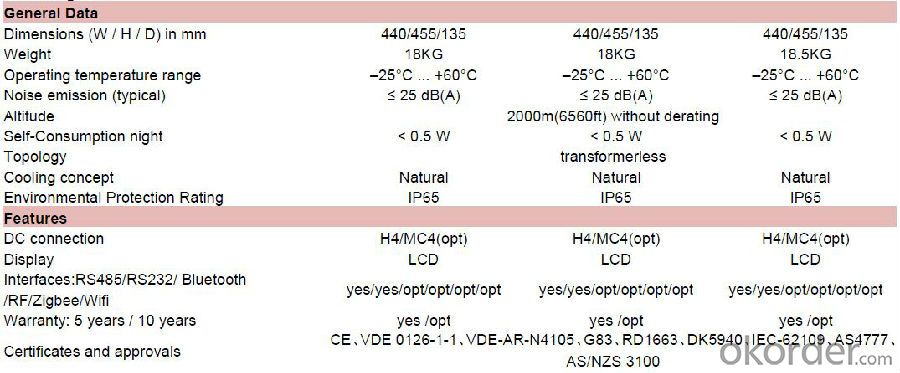
FAQ
Q1: How to choose a right inverter?
A1:Tell us your demand, then our sales will recommend a suitable inverter to you.
Q2: What's the different between inverter and solar inverter?
A2: Inverter is only accept AC input, but solar inverter not only accept AC input but also can connect with solar panel to accept PV input, it more save power.
Q3: How about the delivery time?
A3: 7 days for sample; 25 days for bulk order.
Q4: What is the warranty of inverter?
A4: 5/10 years warranty on CNBM-Solar product.
Q5: How to solve the technical problem?
A5: 24 hours after-service consultancy just for you and to make your problem to solve easily.
- Q: How does a solar inverter handle harmonics in the grid?
- A solar inverter handles harmonics in the grid by implementing various techniques such as filtering, synchronization, and control algorithms. These techniques help in mitigating harmonics and ensuring that the power generated from the solar panels is synchronized and compatible with the grid's electrical frequency and voltage. The inverter's control system monitors the grid's harmonics and adjusts its output accordingly to minimize any adverse effects and maintain grid stability.
- Q: Can a solar inverter be used in conjunction with a backup generator?
- Yes, a solar inverter can be used in conjunction with a backup generator. In fact, this combination is often used in hybrid solar systems to provide continuous power supply even during times of low solar generation or power outages. The solar inverter manages the power flow from both the solar panels and the generator, ensuring a seamless transition between power sources and maximizing the utilization of renewable energy.
- Q: What is the function of a solar inverter?
- The function of a solar inverter is to convert the direct current (DC) electricity produced by solar panels into alternating current (AC) electricity, which can be used to power household appliances and be fed back into the electrical grid.
- Q: What is the maximum DC input current of a solar inverter?
- The maximum DC input current of a solar inverter depends on its specifications and design. It can vary greatly depending on the model and capacity of the inverter. It is essential to refer to the manufacturer's documentation or specifications to determine the specific maximum DC input current for a particular solar inverter.
- Q: Can a solar inverter be integrated with a smart home system?
- Yes, a solar inverter can be integrated with a smart home system. By connecting the solar inverter to the smart home system, users can monitor and control their solar energy production and consumption remotely. This integration allows for better energy management, optimizing the use of solar power, and potentially saving on electricity bills.
- Q: What is the efficiency loss of a solar inverter over time?
- The efficiency loss of a solar inverter over time depends on various factors such as the quality of the inverter, maintenance practices, and environmental conditions. Generally, high-quality inverters experience a minimal efficiency loss, typically around 0.5% to 1% per year. However, if the inverter is poorly maintained or subject to harsh conditions, the efficiency loss could be higher. Regular maintenance and monitoring can help mitigate efficiency loss and ensure optimal performance.
- Q: What is the role of a voltage regulation feature in a solar inverter?
- The role of a voltage regulation feature in a solar inverter is to ensure that the output voltage remains stable and within a specified range, regardless of fluctuations in the input voltage from the solar panels. This feature helps to protect the connected appliances and devices from damage due to overvoltage or undervoltage, and also optimizes the efficiency and performance of the solar inverter system.
- Q: What is the maximum power output of a solar inverter?
- The maximum power output of a solar inverter can vary depending on its size and model. Generally, residential solar inverters have a power output ranging from 2 kilowatts (kW) to 10 kW, while commercial and utility-scale inverters can have power outputs exceeding 1 megawatt (MW).
- Q: Can a solar inverter be used with a solar-powered waste management system?
- Yes, a solar inverter can be used with a solar-powered waste management system. A solar inverter is responsible for converting the direct current (DC) electricity produced by solar panels into alternating current (AC) electricity that can be used by electrical appliances and systems. In the case of a solar-powered waste management system, the solar inverter would convert the DC electricity generated by the solar panels into AC electricity, which can then power the various components of the waste management system such as motors, sensors, and controls. This ensures that the waste management system operates efficiently and effectively using renewable solar energy.
- Q: What is the role of a remote monitoring system in a solar inverter?
- The role of a remote monitoring system in a solar inverter is to provide real-time data and analysis of the performance and operation of the solar inverter. It allows for remote access and control, enabling solar system owners and operators to monitor the energy production, detect any issues or faults, and optimize the performance of the solar inverter from a remote location.
Send your message to us
6.5 Kw CNBM-1000TL On-Grid Inverter with Energy Storage Hybrid Solar Inverter
- Loading Port:
- China main port
- Payment Terms:
- TT OR LC
- Min Order Qty:
- 1000 watt
- Supply Capability:
- 100000 watt/month
OKorder Service Pledge
OKorder Financial Service
Similar products
Hot products
Hot Searches
Related keywords
